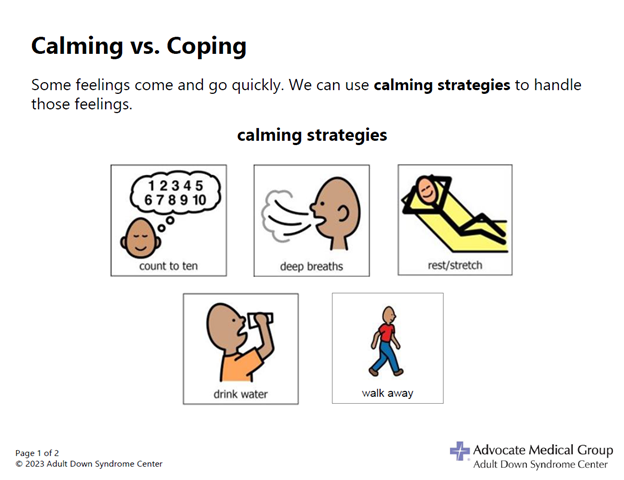What is the difference between calming and coping strategies?
Many times, we use the terms "calming" and "coping" interchangeably. There is often overlap in the strategies that people use to help themselves calm down and cope with difficult feelings or situations. In our groups for individuals with Down syndrome, we discuss that some feelings come and go quickly, and we can use calming strategies to manage them. Other feelings linger, so we would need to use a calming strategy in the immediate moment, as well as a coping strategy once we have calmed down from the initial emotional response.
For example, if you are having a disagreement with another person, you might choose to walk away from the conversation as a calming strategy and a way to cope with your feelings of frustration. However, the disagreement may leave you still feeling unsettled hours or even days later. In this case, you would want to use an additional coping strategy to manage those feelings. The coping strategy might include talking about your feelings or reframing your thoughts about the situation.
The handout pictured below describes calming and coping strategies. It can be a good visual reminder of strategies that can be used to manage our emotions and feelings.
Calming vs. Coping Visual .png)


Additional visuals
Strategies to Help Me Calm Down .png)
Things I Can Do to Help Me Calm Down .png)
Compromise .png)
Opposite Actions
"I" Statements
Reframing our Thoughts